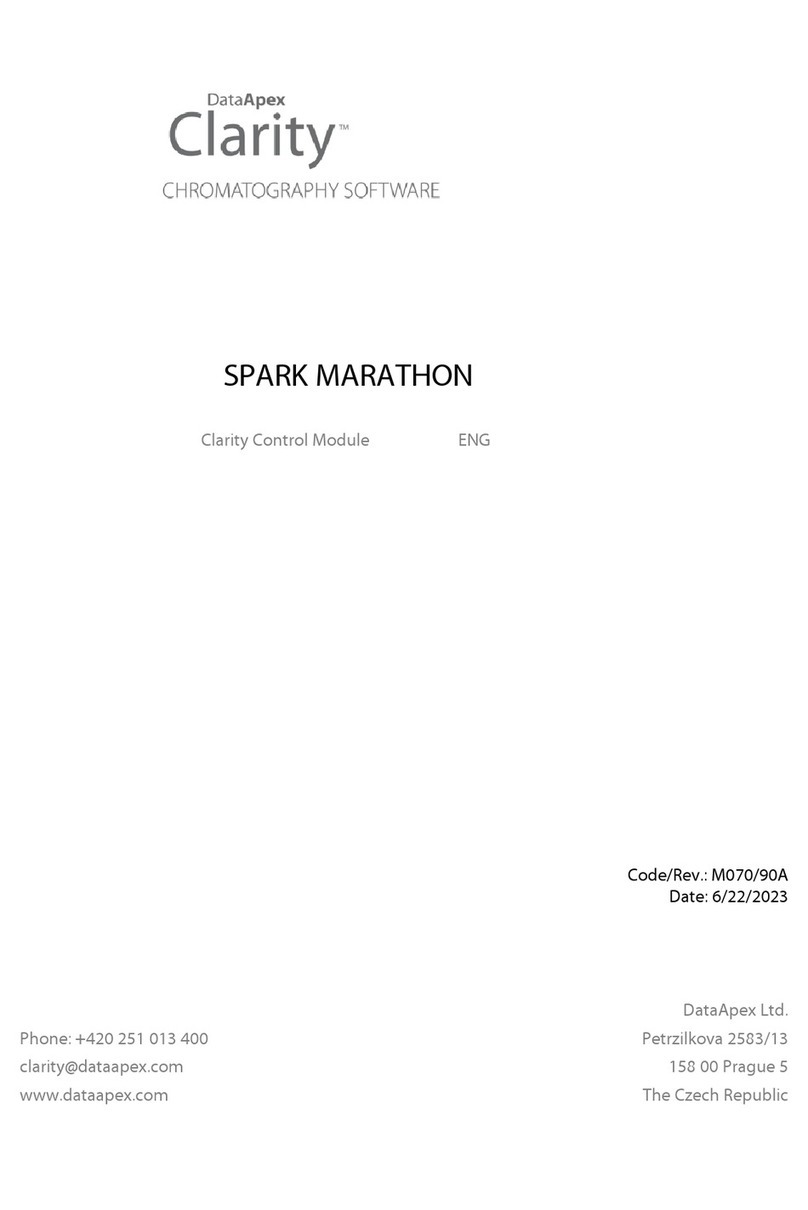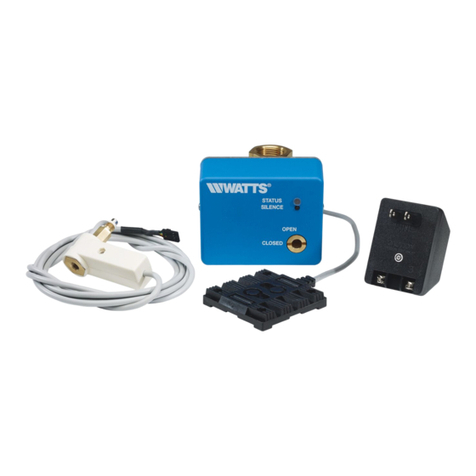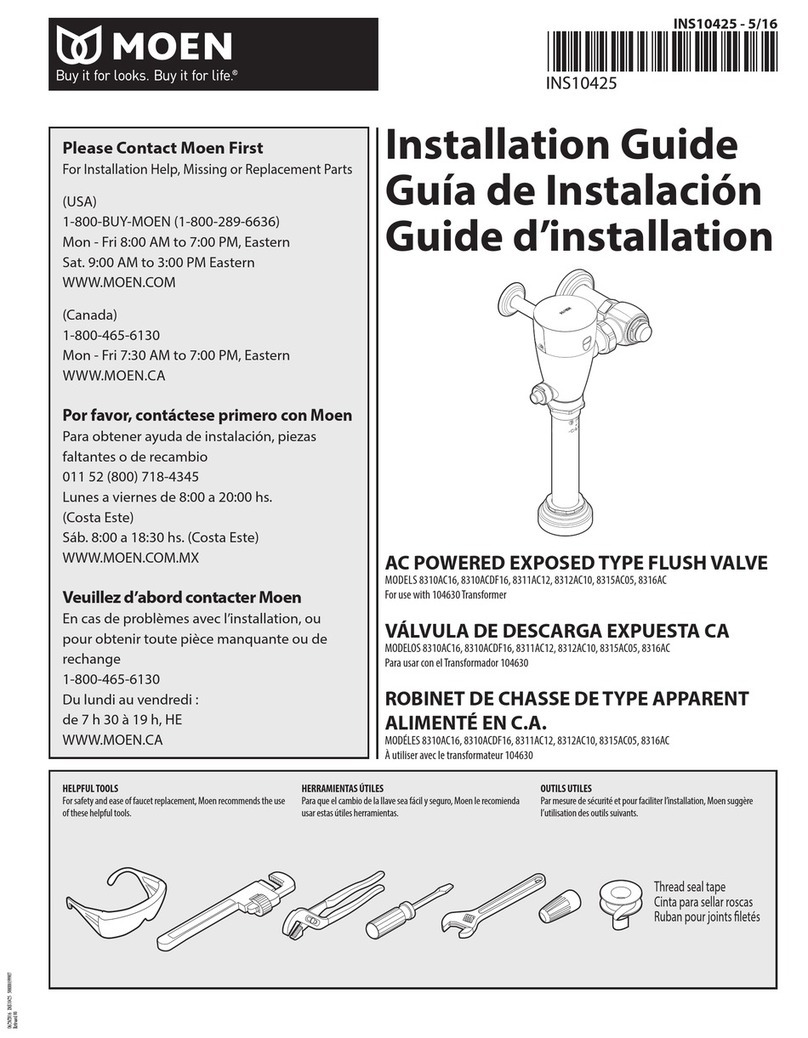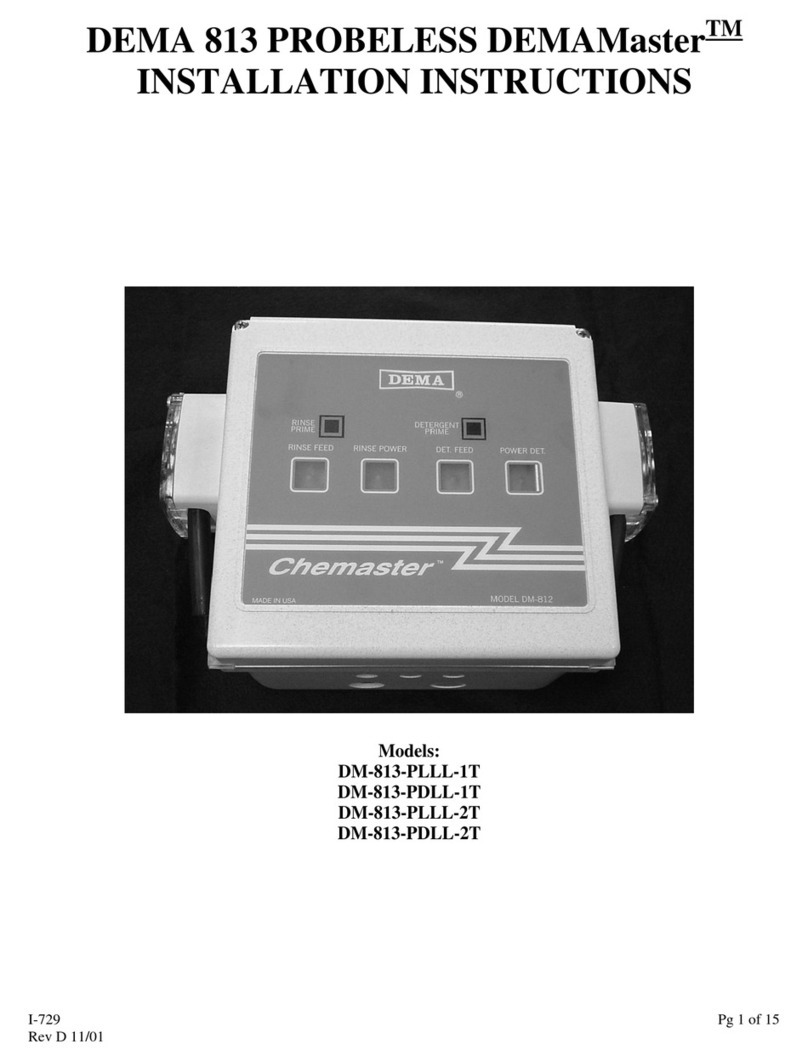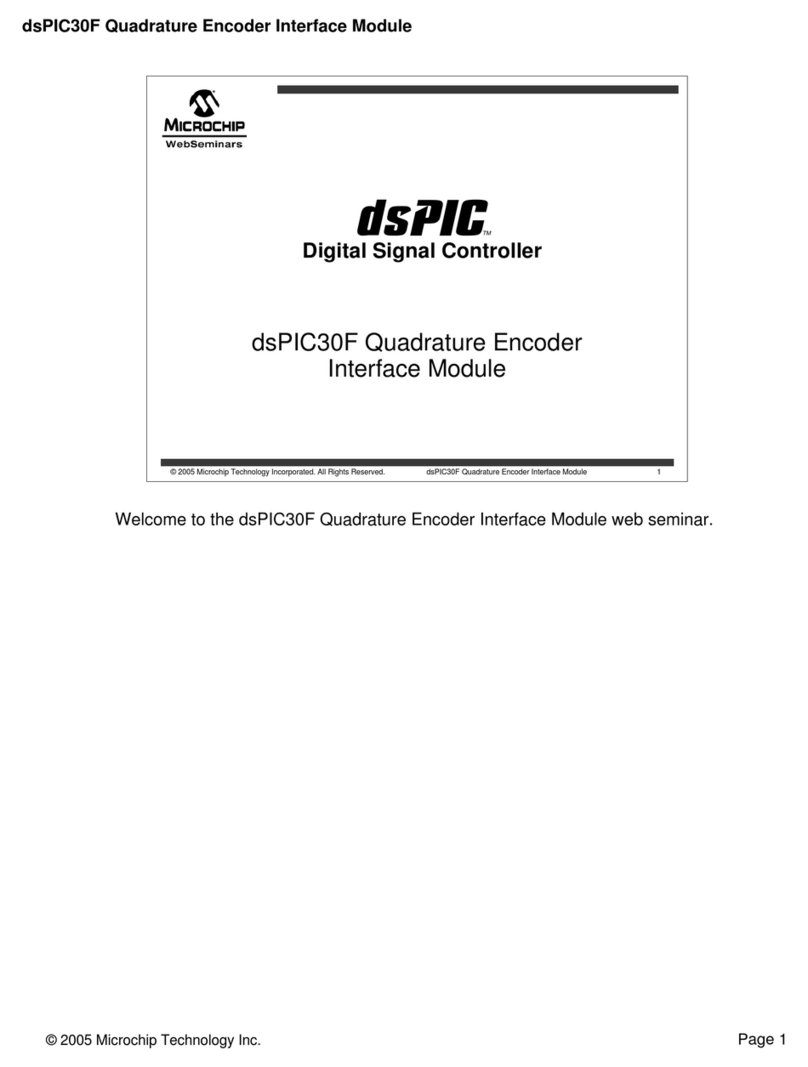DataApex Shimadzu GC2014C APC/AFC User manual

Clarity Controls
Shimadzu GC-2014C
GC ENG
Code/Rev.: M113/26C
Date: 13.5.2008
Phone: +420 251 013 400 DataApex Ltd. 2008
Fax: +420 251 013 401 Podohradska 1
www.dataapex.com The Czech Republic

Clarity®, DataApex®and ®are trademarks of DataApex Ltd. Microsoft®and WindowsTM are trademarks
of Microsoft Corporation.
DataApex reserves the right to make changes to manuals without prior notice. Updated manuals can be
downloaded from www.dataapex.com.
Author:
DM

Shimadzu GC-2014C Contents
i
Contents
1 Shimadzu GC-2014C Control module .....................................1
2 Requirements ........................................................................2
3 Installation Procedure............................................................3
3.1 Hardware - Wiring ................................................................. 3
3.2 Shimadzu GC-2014C setup - communication ........................ 3
3.3 Clarity Configuration ............................................................. 4
4 Using the control module .......................................................6
4.1 Hardware Configuration......................................................... 6
4.2 Method Setup - GC ................................................................ 7
4.2.1 Oven/Zones .................................................................... 7
4.2.2 INJ 1(2) ........................................................................... 8
4.2.3 DET 1 (..4)....................................................................... 9
4.2.4 Time Events .................................................................. 11
4.2.5 Pre Run......................................................................... 13
4.2.6 Other ............................................................................ 14
4.2.7 Gradients ...................................................................... 16
4.3 Method Setup - Acquisition.................................................. 17
4.4 Device Monitor..................................................................... 18
4.5 Shimadzu GC-2014C Setup ................................................. 19
5 Report Setup........................................................................24

Contents Shimadzu GC-2014C
ii
To facilitate the orientation in the Shimadzu GC-2014C manual and Clarity
chromatography
station, different fonts are used throughout the manual. Meanings of these fonts are:
Instrument (blue text) marks the name of the window, to which the text refers.
Open File (dark brown bold) describes the commands and names of fields in Clarity.
WORK1 (capitals) indicates the name of the file and/or directory.
ACTIVE (orange capital italics) marks the state of the station or its part.
Administrator (green italics) refers to a value or text inserted into a field.
The bold text is sometimes also used for important parts of the text and the name of the Clarity
station. Moreover, there are text sections written in format other than normal text. These
sections are closed in boxes with the appropriate pictogram:
- Note - notifies the reader of possibly interesting information.
- Caution - warns the user of possibly dangerous or very important information.
- Question - marks the problem statement or trouble question.
- Answer - marks the response to the question.

Shimadzu GC-2014C 1 Shimadzu GC-2014C Control module
1
1 Shimadzu GC-2014C Control
module
This manual describes the setting of the Shimadzu GC-
2014C chromatograph. The control module enables direct
control of the instrument over serial line.
Fig. 1 Shimadzu GC-2014C (with AOC-20i autosampler)
Shimadzu GC-2014C control module provides the means for
the direct control of the Shimadzu GC-2014C chromatograph.
It allows a limited control of the GC-2014 and GC-2010 - only
the digital data acquisition and temperature zone control is
supported at the moment, the APC (automatic pressure
control) and AFC (automatic flow control) parameters must be
set from the GC keyboard.

2 Requirements
Clarity Controls
2
2 Requirements
•Clarity Installation CD ROM with GC Control module (p/n
A23).
•Free serial COM port in the PC.
Modern computers usually have only 1 (if any) serial (COM)
port installed. To use more devices requiring the port, the
MultiCOM adapter (p/n MC01) is available.
•Serial cross DB9F-DB9F cable (p/n SK01).
Cables are not part of Clarity Control Module. It is strongly
recommended to order required cables together with the
Control Module.

Shimadzu GC-2014C
3 Installation Procedure
3
3 Installation Procedure
3.1 Hardware - Wiring
Start and Ready signals are communicated with Clarity
through the Serial cross DB9F-DB9F cable, so it is not
necessary to connect additional starting cables. The signal
cable has to be connected according to the following scheme.
In a set with the Autosampler synchronization cables might
be necessary.
Typical connections of a set with Autosampler can be found in
the Getting Started manual (chapter Device Setup and
Wiring).
Typical serial cable wiring is described in the picture.
Fig. 2 Serial cross cable DB9F – DB9F
3.2 Shimadzu GC-2014C setup - communication
The GC must be fully configured prior to connecting to
Clarity. No special settings have to be made on the
Shimadzu GC-2014C chromatograph, only the
communication protocol of the instrument (set on the FUNC
key screen by using 6. GC CONFIGURATION - 3.
TRANSMISSION PARAMETER) has to be set to LEVEL3.
Baud rate set in the instrument must correspond to the
Baud Rate set in the Shimadzu GC-2014C Setup dialog. For
locally connected instruments with short interconnecting
cable the Baud Rate set as default (115200) is
recommended. With the rising length of the cable or when
connected via the network the Baud Rate should be set
lower.

3 Installation Procedure
Clarity Controls
4
3.3 Clarity Configuration
Menu Path: Clarity -> System -> Configuration
•In the System Configuration dialog press the Add button to
invoke the Available Control Modules dialog.
Fig. 3 Available Control Modules
•Select the Shimadzu GC-2014C in the GC section and press
the Add button.
•The Shimadzu GC-2014C Setup dialog will appear.
Fig. 4 Shimadzu GC-2014C Setup

Shimadzu GC-2014C
3 Installation Procedure
5
•Fill in the Port, Baud Rate and Name according to the
settings and the connection of the GC (for more details see
chapter Shimadzu GC-2014C Setup on pg. 19).
•Press the Autodetect button to read all settings from the
instrument and apply them in the Shimadzu GC-2014C Setup
dialog.
It is strongly recommended not to change the settings gained
through the Autodetect function. When opening the
Instrument window, those settings are checked against the
settings of the GC and in case they are not the same the
warning message is issued and no control is possible.
•Switch to the Signals tab (for more details see the Shimadzu
GC-2014C Setup dialog section later in the manual), select the
correct number of signals you want to acquire, name them
and possibly check the Enable to start device(s) from
Clarity checkbox. Press the OK button.
•The Shimadzu GC-2014C item will appear in the Setup
Control Modules list of the System Configuration dialog.
•Drag the GC icon from the Setup Control Modules list on
the left side to the desired Instrument tab on the right
side , or use the button to do so.
Fig. 5 System Configuration

4 Using the control module
Clarity Controls
6
4 Using the control module
New GC tab appears in the Method Setup dialog, enabling the
setting of the GC control method.
4.1 Hardware Configuration
Menu Path: Instrument -> Method -> GC Control -> GC Status
Fig. 6 Hardware Configuration
This dialog is invoked by pressing the GC Status button in
the Method Setup - GC dialog. Hardware Configuration dialog
displays the type of the chromatograph and the COM port to
which it is connected.

Shimadzu GC-2014C
4 Using the control module
7
4.2 Method Setup - GC
4.2.1 Oven/Zones
Menu Path: Instrument -> Method -> GC Control
Fig. 7 Method Setup – GC – Oven/Zones
Oven Max
Sets the maximal allowed temperature for the column oven.
Possible values are: 0- 440.
Please note that the maximum value may differ for certain GC
models - listed values for it range between 400 and 470 °C.
Equilibry Time
Time that the GC needs to reach the temperature
equilibrium after the temperature program gets to the set
initial temperature. This time is used to distribute the heat
evenly in the oven.
Gradient Table
Sets the Heat Rate, desired temperature (Final Temp) and
time to hold this temperature (Hold Time). The Total Time
column will be calculated automatically. In other words, for
isothermal part of the temperature gradient, the temperature
set in Final Temp will be kept for the interval set in Hold

4 Using the control module
Clarity Controls
8
Time. To delete a row, simply delete the value in the Heat
Rate column on that row.
Temperature Zones
Sets the temperature and maximum temperature of the
zones that have been set in the Shimadzu GC-2014C Setup -
Heater Ports dialog (for more details see chapter Shimadzu
GC-2014C Setup on pg. 19).
Description
Description of the method (this description is not sent to or
read from GC, it serves for the information purposes only).
4.2.2 INJ 1(2)
Menu Path: Instrument -> Method -> GC Control
Fig. 8 Method Setup - GC - INJ 1
This tab governs the settings concerning the injection port of
the Shimadzu GC-2014C chromatograph. Up to two
injection ports may be configured and used at the same
time. The tab is only present when the SPL operation is
selected in the Shimadzu GC-2014 Setup - Piping dialog (for more
details see chapter Piping tab on pg. 20) for a given injector
port.
Split Mode
Defines the operation mode for the injector port. The
possible options are Split, Splitless and Direct (see Shimadzu

Shimadzu GC-2014C
4 Using the control module
9
GC-2014C hardware manual for more details on these
injection modes).
Sampling Time [min.]
Sets the sampling time in minutes for the Splitless Sampling
Mode.
4.2.3 DET 1 (..4)
Menu Path: Instrument -> Method -> GC Control
Fig. 9 Method Setup - GC - DET 1
This tab allows to set the parameters for a detector
configured in the Shimadzu GC-2014C Setup dialog. Particular
fields may vary, according to the type of the detector set.
On/Off
Switches the detector on and off. The detector switched off
gives 0as a resulting signal.
Filter Time Const.
The value set here influences the processing of the detector
signal. It works as a noise filter, the higher the constant, the
lower the noise. On the other hand, usage of the higher
values will flatten peaks and may cause lower or smaller
peaks to disappear.

4 Using the control module
Clarity Controls
10
Control Mode
Sets the mode of operation of the particular detector. Two
option sets are available in this field, depending on the type
of the detector used:
•Dual flame ionization detector (WDFID) may work in the
Dual mode or use the signal from one cell only. Dual
detector can also measure only on single cell - then select
Single L for the left cell or Single R for the right cell.
•Flame thermionic detector (FTD and WFTD) allows to use
two possible control modes - Current and Voltage.
Signal Polarity
This field is only present when using the dual detector in the
Dual mode or one of TCD detectors. Sets the polarity of the
dual data, or in other words, the method of data calculating
(either the signal of the right cell minus the signal of the left
cell (polarity -) or vice versa (polarity +)).
Range
Applies on the analog detector signal before its processing to
the digital data directly in the Shimadzu GC-2014C. This
value serves for the compensation of the overly high signals.
Current
Serves for entering the value of current set on the detector.
Possible range and units depend on the type of the detector -
FTD detector has the range of values 0.00-10.00 pA, ECD
detector 0.00-2.00 nA and TCD detector 0-200 mA. This field
is only present for Electron capture (ECD), Thermal
conductivity (TCD) and Flame thermoionic (FTD and WFTD)
detectors.
Signal Output Port
Specifies the signal output of the particular detector.
Shimadzu GC-2014C provides up to 4 signal outputs set in
the Shimadzu GC-2014C Setup - Signals dialog (for more details
see chapter Shimadzu GC-2014C Setup on pg. 19).
Power Controller
This field is only present on tabs of Flame thermoionic
detectors (FTD and WFTD).
Adjust Time
This field can only be edited when the Power Controller
checkbox is selected.

Shimadzu GC-2014C
4 Using the control module
11
Interference Filter
Possible values are P, Sand Sn. This field is only present
when using the Flame photometric detector (FPD or WFPD).
4.2.4 Time Events
Menu Path: Instrument -> Method -> GC Control
Fig. 10 Method Setup - GC - Time Events
This tab allows to set the events that should happen during
the run based on the analysis time. This includes events like
switching the detector polarity, range or current (where
applicable), setting temperatures to
detector/injector/auxiliary zones etc. To delete a row, simply
delete the value in the Time column on that row.
The table should be filled with the Time of the event in the
first column (in minutes, decimal format - 2 minutes 45
seconds should be set as 2.75), the event type in the Event
column, event value in the Value column and the Line
selected as set on the Shimadzu GC-2014C Setup - Line Config
tab. Possible events are:
Det 1(..4) Polarity
Sets the polarity of the detector (if the polarity for the given
detector has any sense). Polarity +corresponds to the value
1, polarity -corresponds to the value 2.
Det 1(..4) Range

4 Using the control module
Clarity Controls
12
Changes the detector range (as set before the analysis on the
DET X tab) during the course of the analysis. Range x1
corresponds to value 0, range x10-1 to value 1, x10-2 to value
2, x10-3 to value 3and x10-4 to value 4.
Det 1(..4) Current
Changes the current value of the detector (if the current for
the given detector has any sense). The new value should be
in range and units dependent on the type of the detector -
FTD detector has the range of values 0.00-10.00 pA, ECD
detector 0.00-2.00 nA and TCD detector 0-200 mA.
All 4 possible detectors are listed, even if they are not present
and configured in the Shimadzu GC-2014C Setup dialog. Those
not configured will have the text in the format Det #X Polarity
etc. with the # character - these shouldn't be used in the Time
Events table.
Event Operation
Performs an event operation defined by the event code.
These codes may be used as a positive number or negative
number, in which case the opposite of the operation is
performed. For example, event code 51 performs the
autozero operation on detector 1, while -51 event code
cancels the zero adjustment on detector 1. The basic event
codes and their functions are:
Event Code
Function
51 Autozeroes the Detector 1
52 Autozeroes the Detector 2
53 Autozeroes the Detector 3
54 Autozeroes the Detector 4
Tab 1: Event codes
For more event codes please see Shimadzu hardware
documentation.
Temperature of INJ1(2), DET1(2), AUX3(..5)
Changes the temperature of the particular temperature
zone. The initial temperature is set on the Oven/Zones tab,
but can be changed later during the analysis this way. The
Value column should hold the temperature in °C.
Program stop
Stops the GC control program. The value entered into the
Value column should be set to XY, where Xis the number of

Shimadzu GC-2014C
4 Using the control module
13
runs before the program stop command is sent and Yis the
number of file (in the GC) to be loaded after that. For
example value 16 corresponds to the program stop
command sent after one run of the method, after which the
FILE6 is loaded. The number of method runs doesn't have
any meaning for Clarity as the method is usually sent after
each injection, thus resetting the counter after each
injection. For more details, consult Shimadzu manual.
4.2.5 Pre Run
Menu Path: Instrument -> Method -> GC Control
Fig. 11 Method Setup - GC - Pre Run
This tab has the same functionality as the Time Events tab, so
the functions are described there together. The Pre Run tab
serves for setting of the program that takes place before the
analysis start.

4 Using the control module
Clarity Controls
14
4.2.6 Other
Menu Path: Instrument -> Method -> GC Control
Fig. 12 Method Setup - GC - Other
This tab allows to set the behavior of some parts of the
Shimadzu GC-2014C chromatograph.
Shutdown
Defines the behavior of the chromatograph after the analysis
end.
Keep State
The chromatograph will do nothing when the
analysis is completed.
Set Off after analysis
The chromatograph performs the System Off
function (check Shimadzu GC-2014C manual for
more details). This function is useful for switching
the chromatograph off after the last sample in the
sequence. When the Clarity Instrument is set to
send a method without prompting in the System
Configuration - Instrument Method Sending dialog and there
is another method opened in the Instrument window
at the analysis end, the chromatograph will be

Shimadzu GC-2014C
4 Using the control module
15
turned off by the current method and then turned
on by the sending of the instrument method.
Be careful when switching off instruments without automatic
pressure control (APC - GC-2014C) and automatic flow control
(AFC - all GC-2014 chromatographs) - the manually
controlled gasses flow is not switched off, which may end in
the leakage of possibly dangerous gasses (hydrogen) into the
laboratory environment.
Zero at ready
When checked, the chromatograph performs the autozero
action after it becomes READY.
Auto flame ON
When checked, the chromatograph will try to ignite the
flame in the detector after sufficient temperature and gasses
pressure was reached.
Re-ignite
While checked, the chromatograph will try to re-ignite the
flame in the detector when it is quenched. This may be
important during the start of the chromatograph as the auto
ignition may not be successful on the first try.

4 Using the control module
Clarity Controls
16
4.2.7 Gradients
Menu Path: Instrument -> Method -> GC Control
Fig. 13 Method Setup - GC - Gradients
This tab displays the temperature gradient as set on the
Method Setup - GC - Oven/Zones tab.
Table of contents
Other DataApex Control Unit manuals
Popular Control Unit manuals by other brands
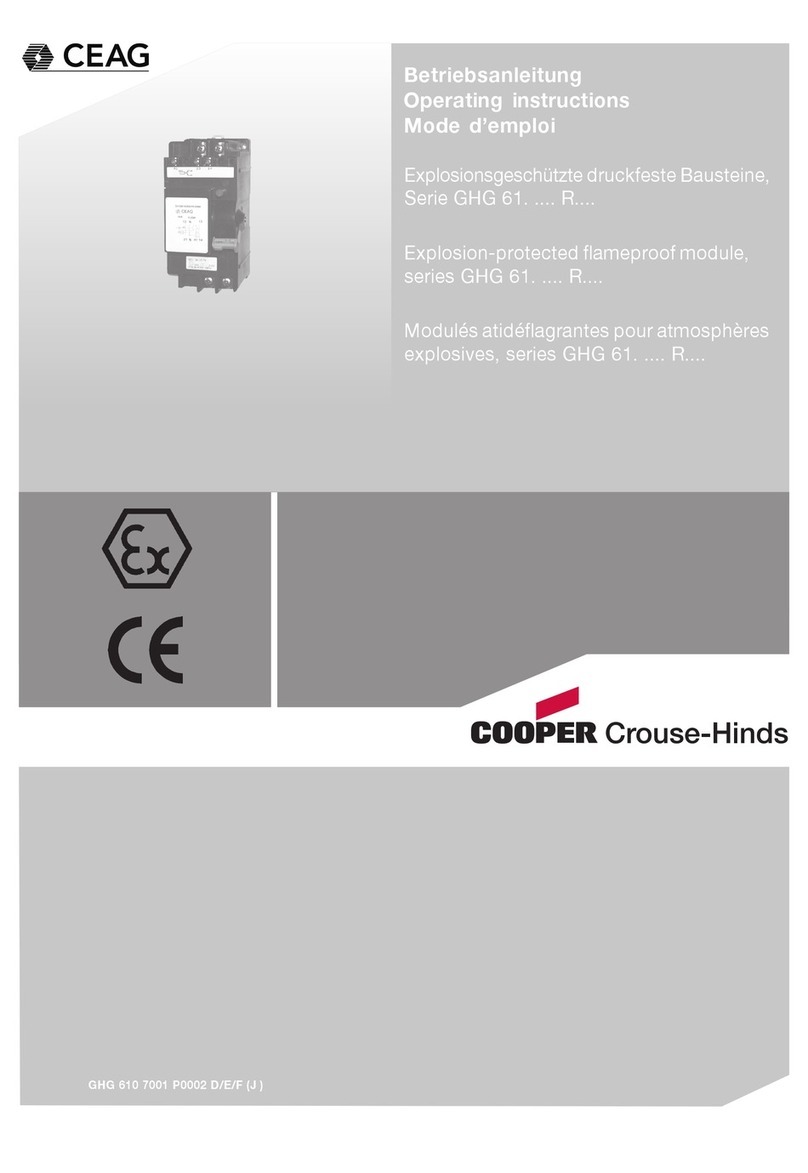
Cooper Crouse-Hinds
Cooper Crouse-Hinds CEAG GHG 61 R Series operating instructions
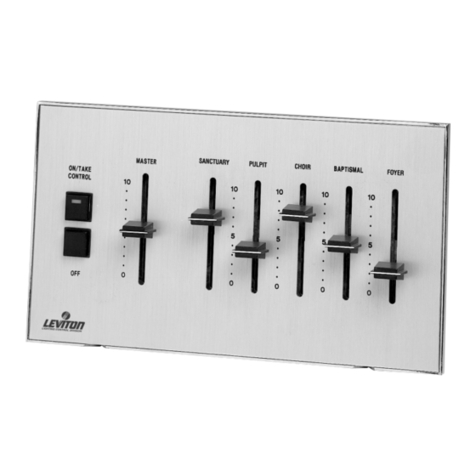
Leviton
Leviton CP series Product data
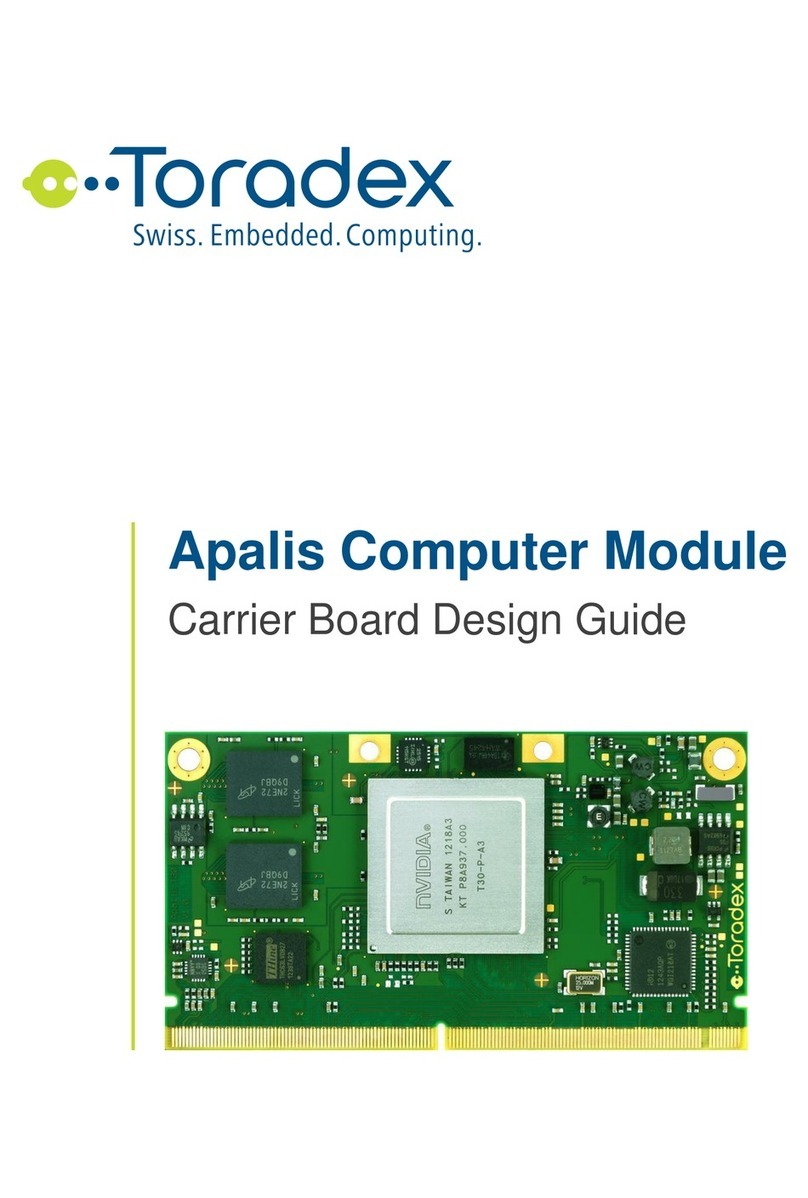
Toradex
Toradex Apalis Series Design guide
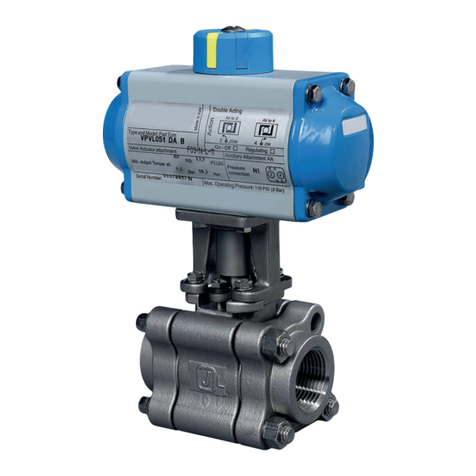
Metso
Metso Jamesbury 4000 Series Safety manual
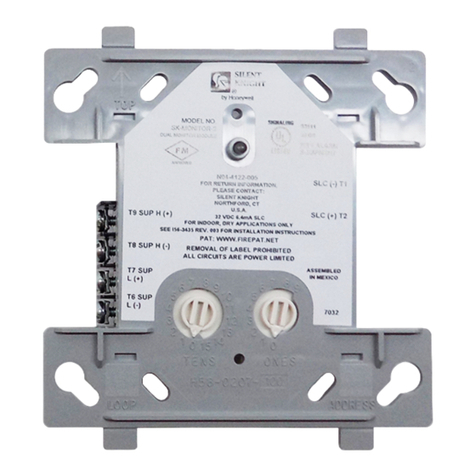
Honeywell
Honeywell Silent Knight SK-Monitor Installation and maintenance instructions
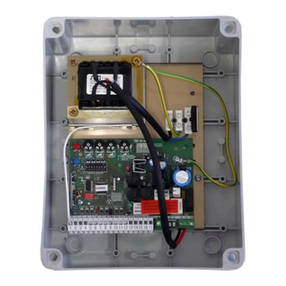
Allmatic
Allmatic SCOR.AS manual

Flowserve
Flowserve R6 Installation, operation and maintenance instructions
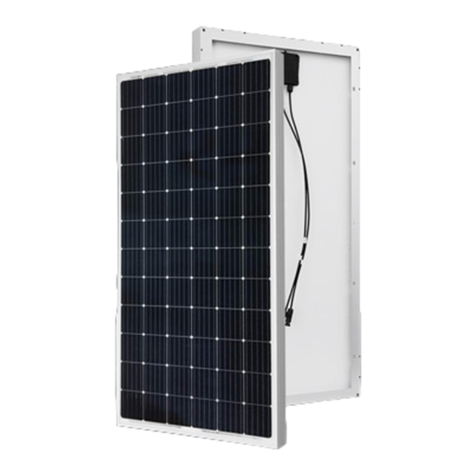
iRex
iRex IRM72S1-400 installation manual
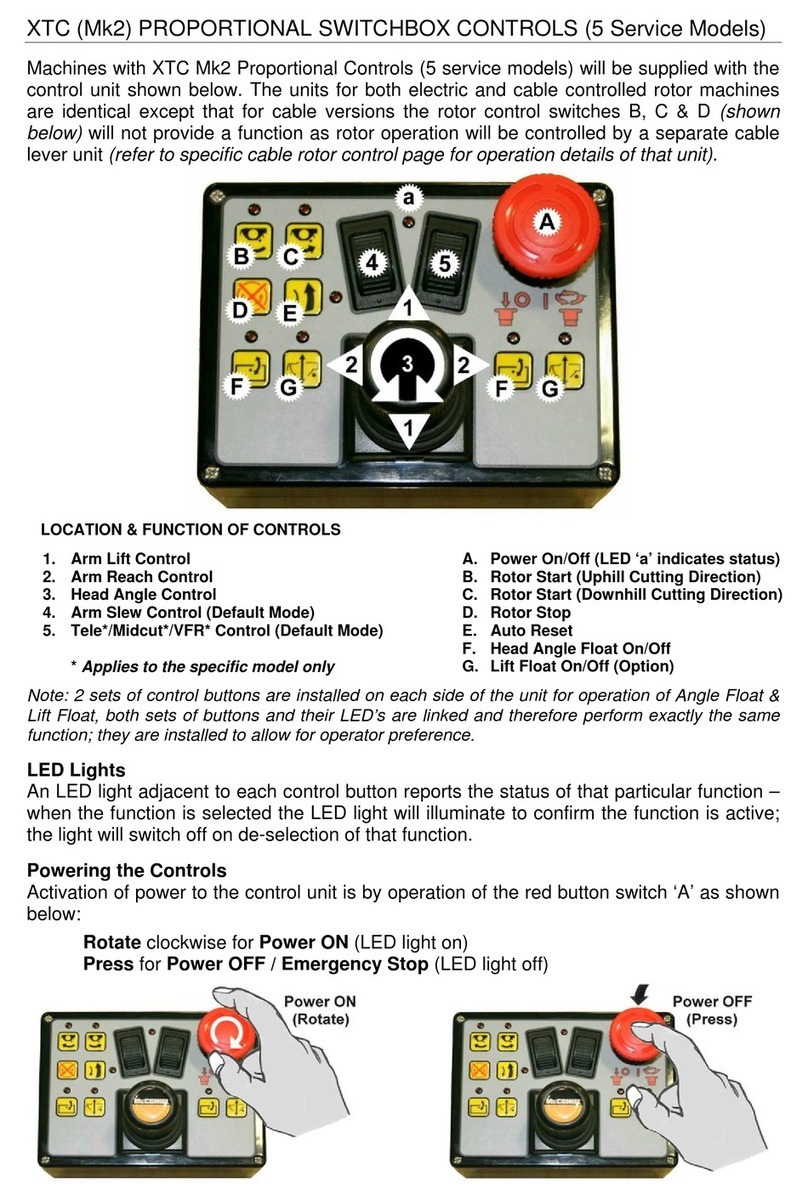
McConnel
McConnel 5 Service XTC Mk2 PROPORTIONAL SWITCHBOX... quick start guide
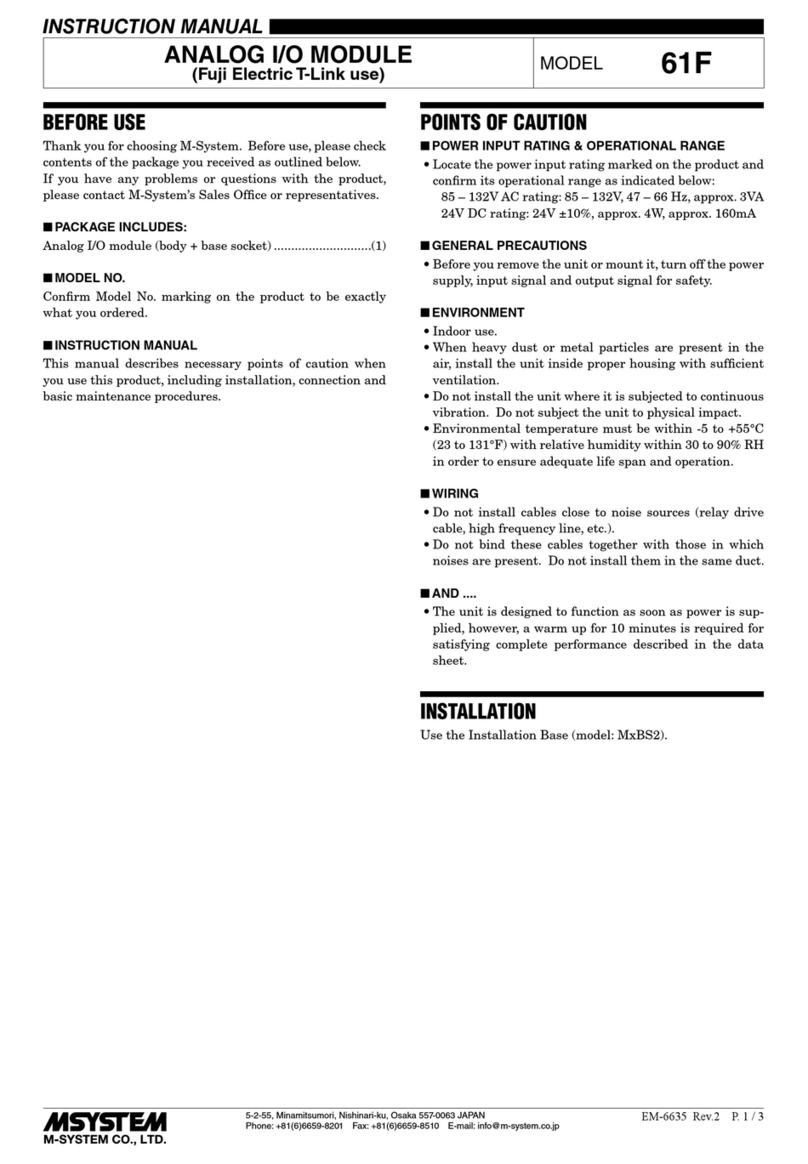
M-system
M-system 61F instruction manual
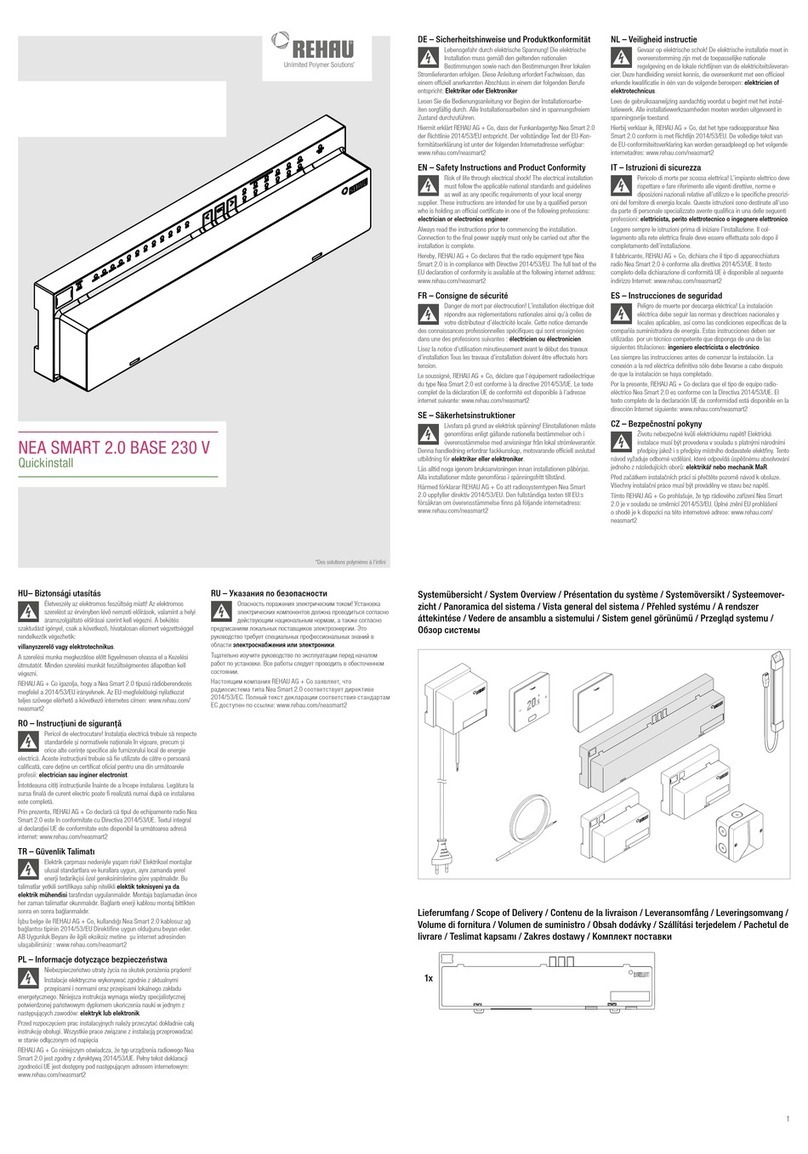
Rehau
Rehau NEA SMART 2.0 BASE 230 V Quick install

Aircatglobal
Aircatglobal VirtualFly EFOS user manual

